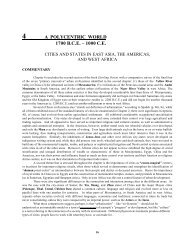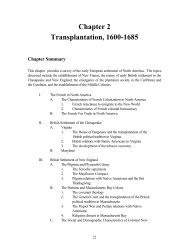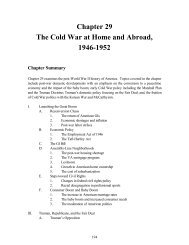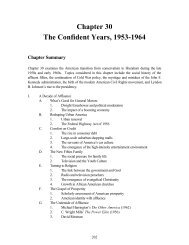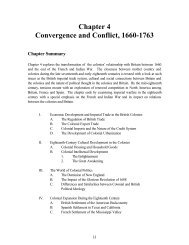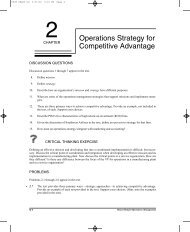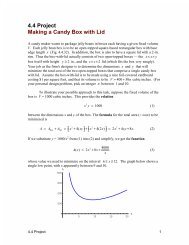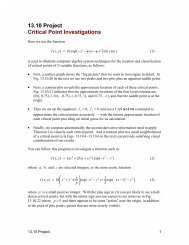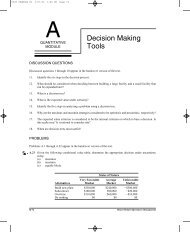14.6 Project Archimedes' Floating Paraboloid
14.6 Project Archimedes' Floating Paraboloid
14.6 Project Archimedes' Floating Paraboloid
Create successful ePaper yourself
Turn your PDF publications into a flip-book with our unique Google optimized e-Paper software.
A := Pi*r*R;<br />
9<br />
4 π<br />
The Volume and Centroid of the Segment<br />
The vertex V of the segment is the point of the parabola z = y 2 in the yz-plane x = 0<br />
where the tangent line is parallel to the major axis P1P2 of the top base. The slope of this<br />
line is<br />
m := (P2[3]-P1[3])/(P2[2]-P1[2]):<br />
so the y-coordinate of V is given by<br />
yv := solve(2*y = m, y):<br />
Hence the vertex is<br />
V := [0, yv, yv^2 ]:<br />
The normal vector to the base plane z = y + 2 is<br />
n := [0,-1,1]:<br />
and the height h of the inscribed cone is the component of<br />
VM := M - V:<br />
in the direction of n. The familiar dot product formula therefore gives<br />
h := dotprod(n,VM)/sqrt(dotprod(n,n));<br />
9 2<br />
8<br />
Finally, <strong>Archimedes'</strong> theorem that the volume of the segment is 3/2 times the volume of<br />
the inscribed elliptical cone with the same vertex V gives<br />
volume = (3/2)*(1/3)*A*h;<br />
<strong>14.6</strong> <strong>Project</strong> 8<br />
2<br />
volume = 81 π / 32<br />
This is the same volume we found by multiple integration. And <strong>Archimedes'</strong> centroid<br />
computation also agrees with our multiple integral computations, because the point on<br />
VM that is 2/3 of the way from V to M is



